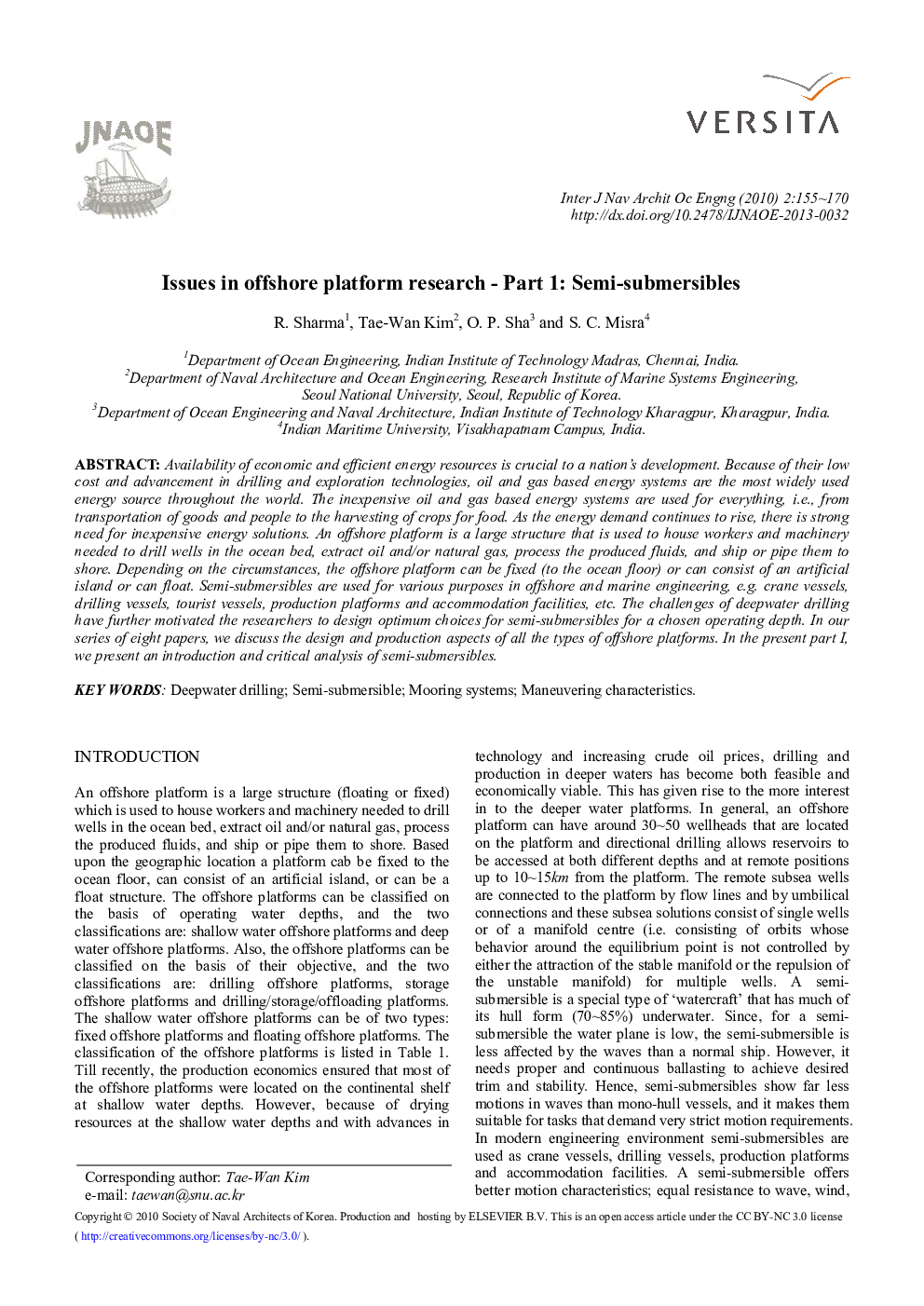| Article ID | Journal | Published Year | Pages | File Type |
|---|---|---|---|---|
| 4452025 | International Journal of Naval Architecture and Ocean Engineering | 2010 | 16 Pages |
ABSTRACTAvailability of economic and efficient energy resources is crucial to a nation's development. Because of their low cost and advancement in drilling and exploration technologies, oil and gas based energy systems are the most widely used energy source throughout the world. The inexpensive oil and gas based energy systems are used for everything, i.e., from transportation of goods and people to the harvesting of crops for food. As the energy demand continues to rise, there is strong need for inexpensive energy solutions. An offshore platform is a large structure that is used to house workers and machinery needed to drill wells in the ocean bed, extract oil and/or natural gas, process the produced fluids, and ship or pipe them to shore. Depending on the circumstances, the offshore platform can be fixed (to the ocean floor) or can consist of an artificial island or can float. Semi-submersibles are used for various purposes in offshore and marine engineering, e.g. crane vessels, drilling vessels, tourist vessels, production platforms and accommodation facilities, etc. The challenges of deepwater drilling have further motivated the researchers to design optimum choices for semi-submersibles for a chosen operating depth. In our series of eight papers, we discuss the design and production aspects of all the types of offshore platforms. In the present part I, we present an introduction and critical analysis of semi-submersibles.
